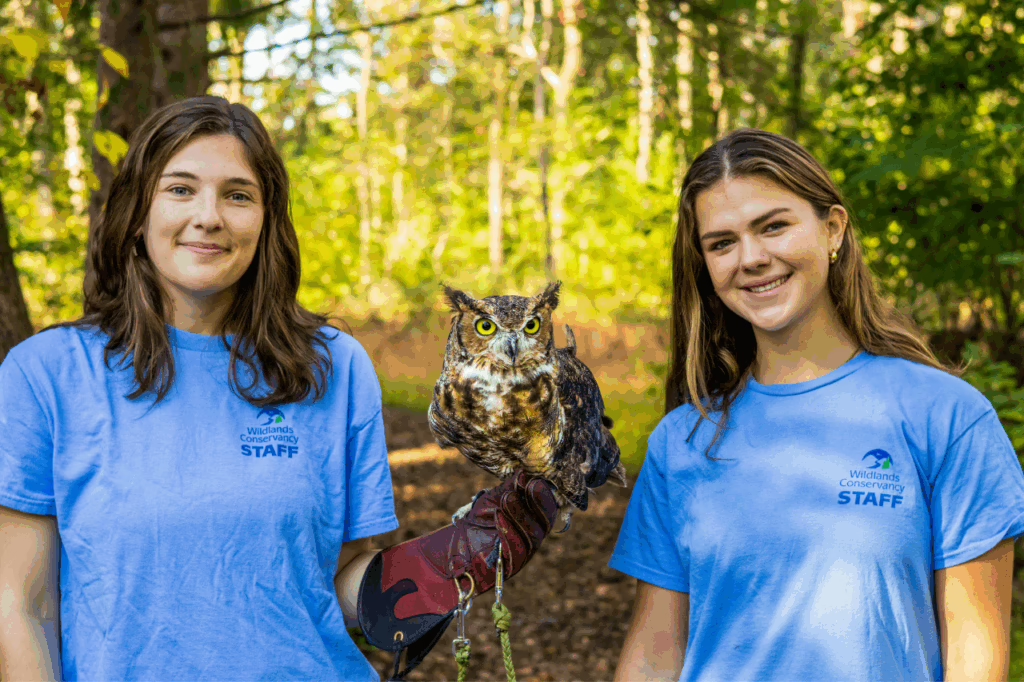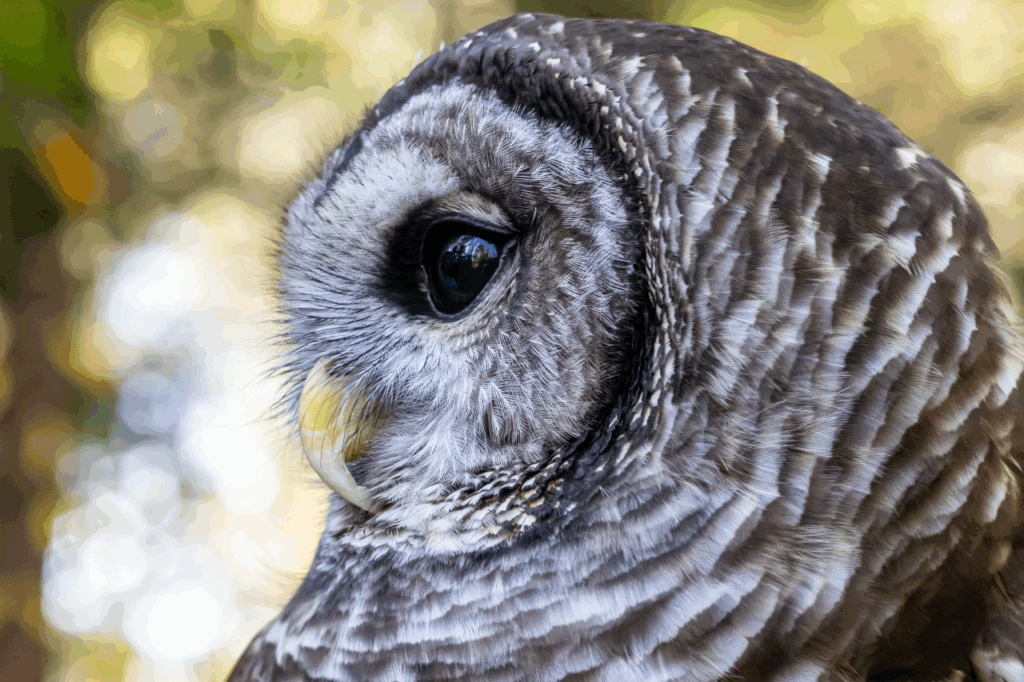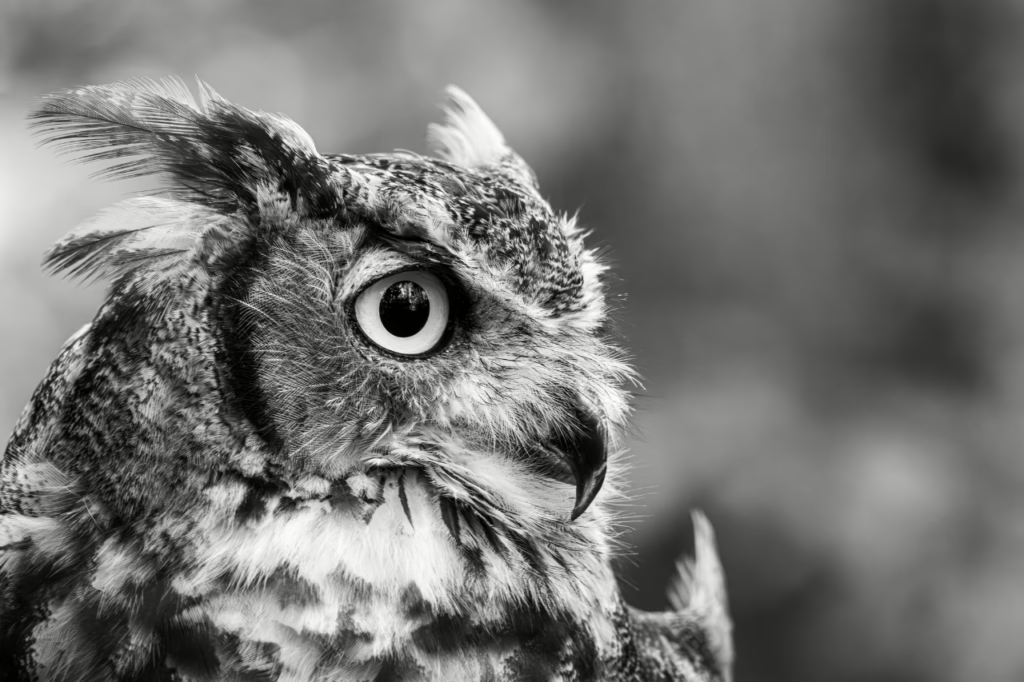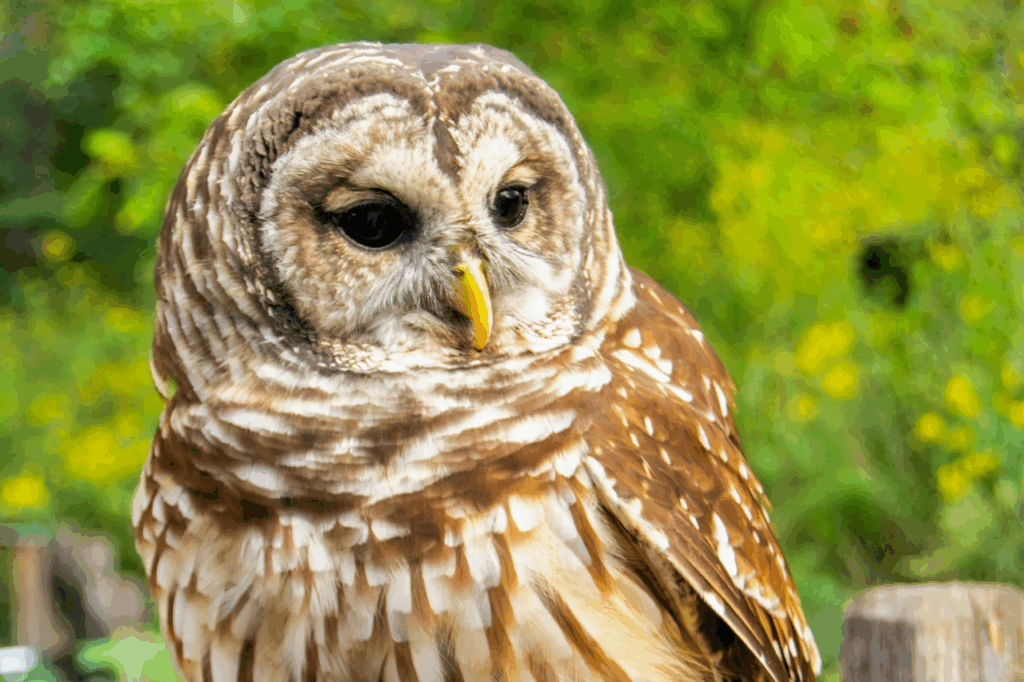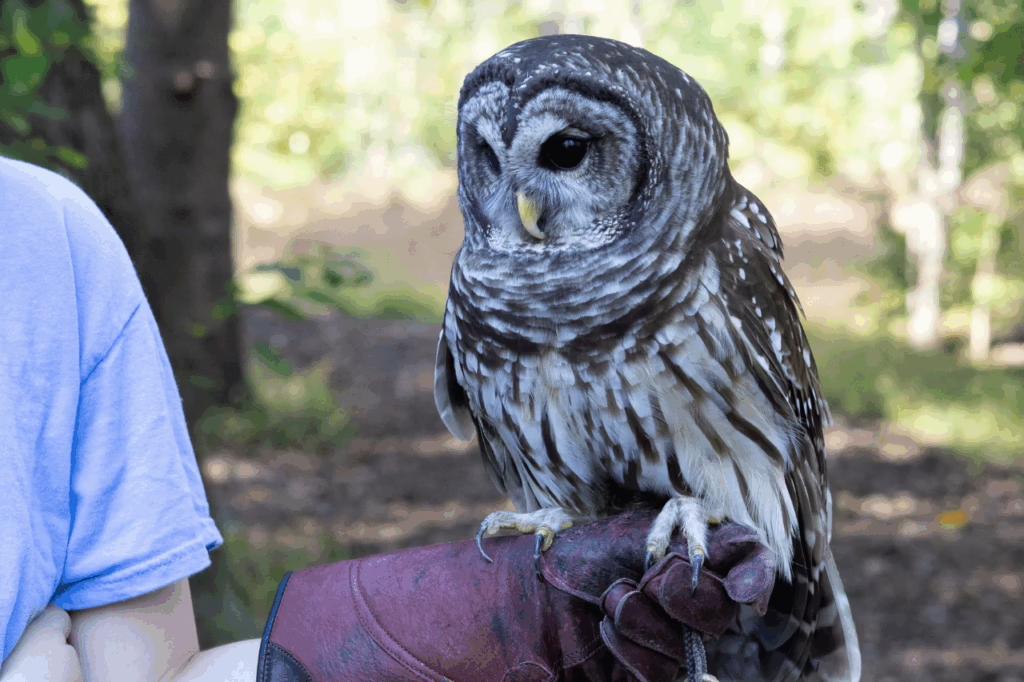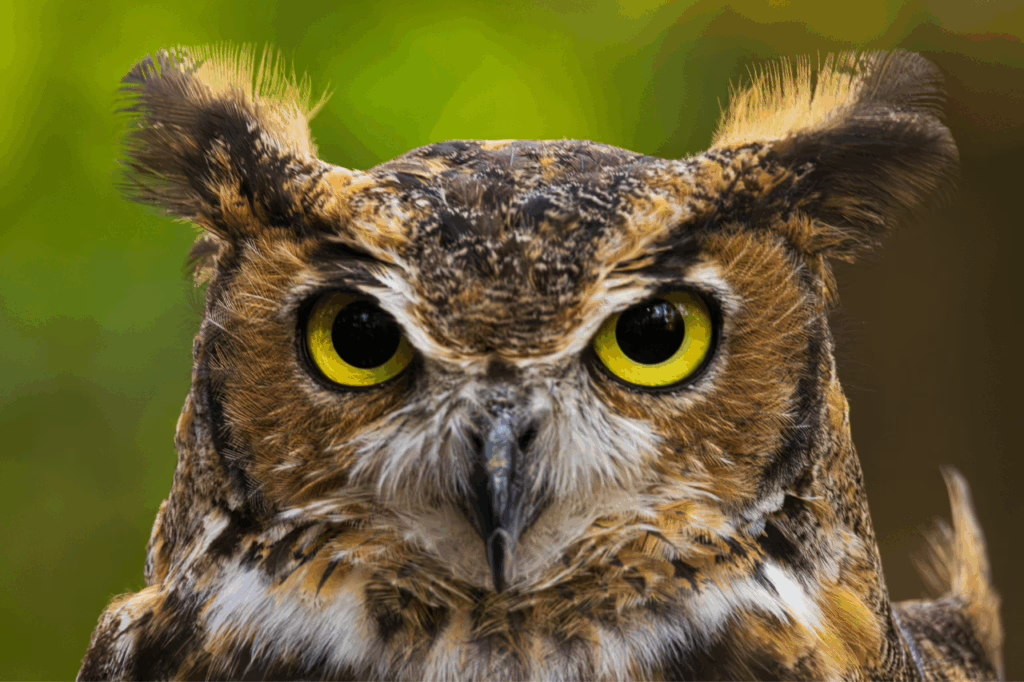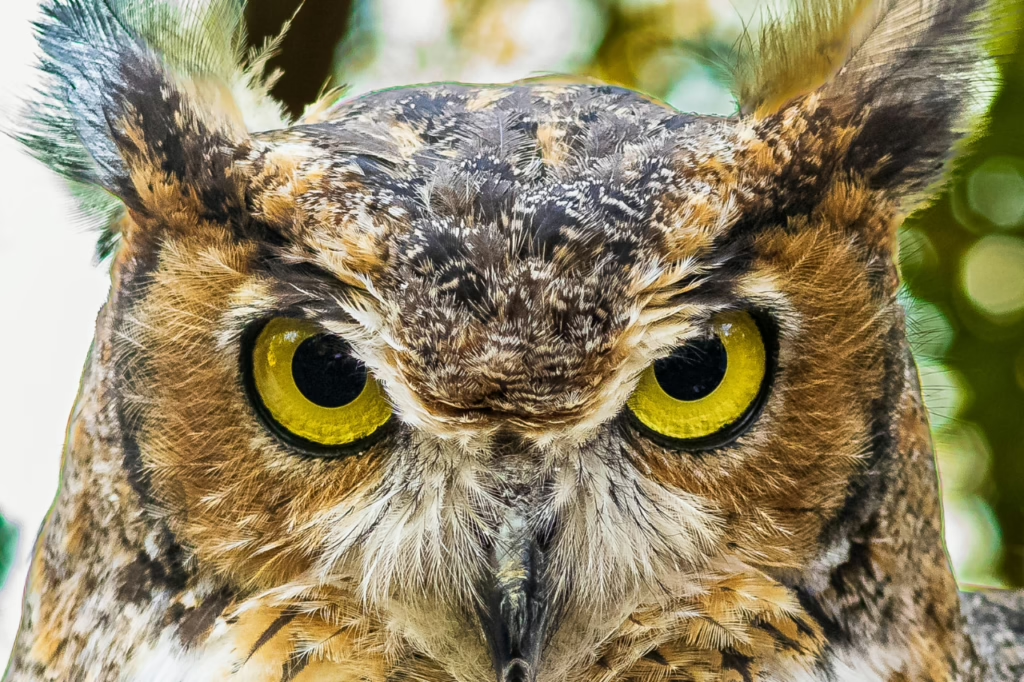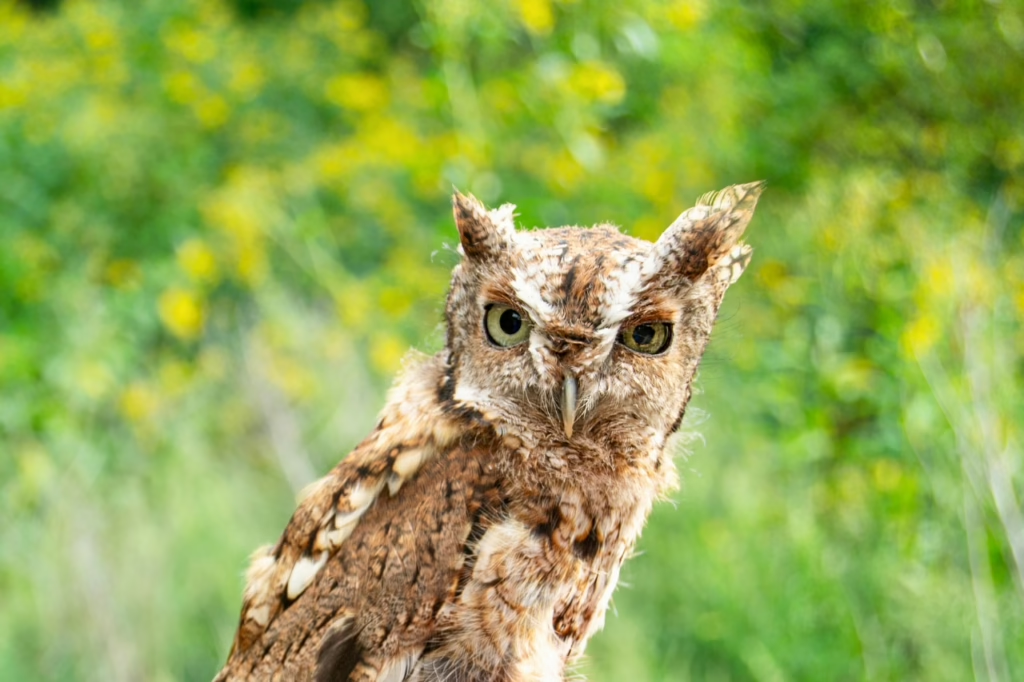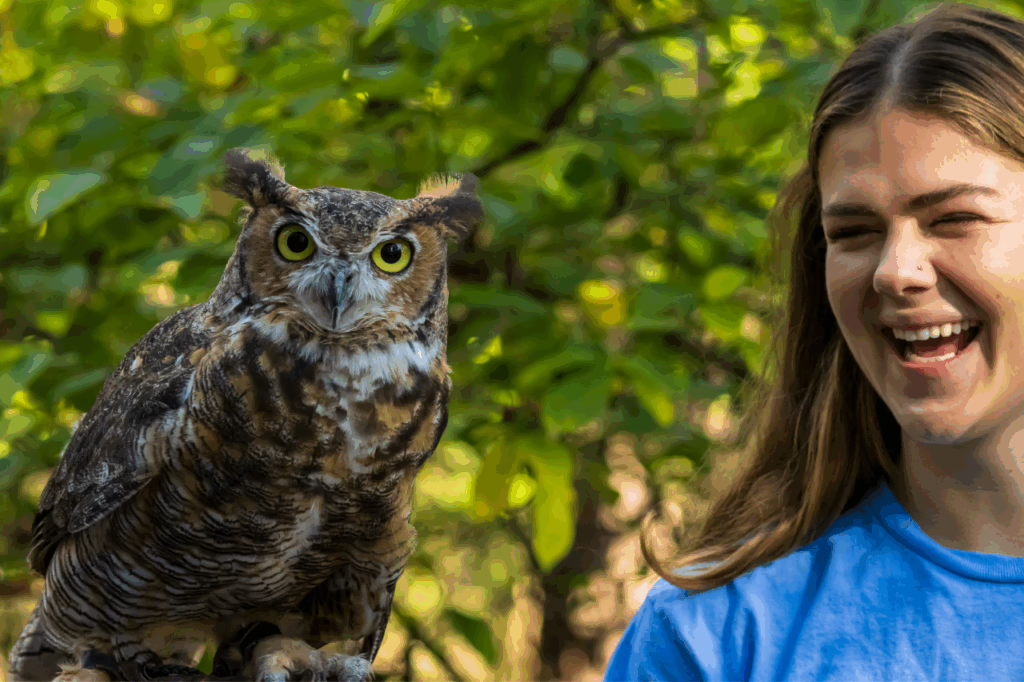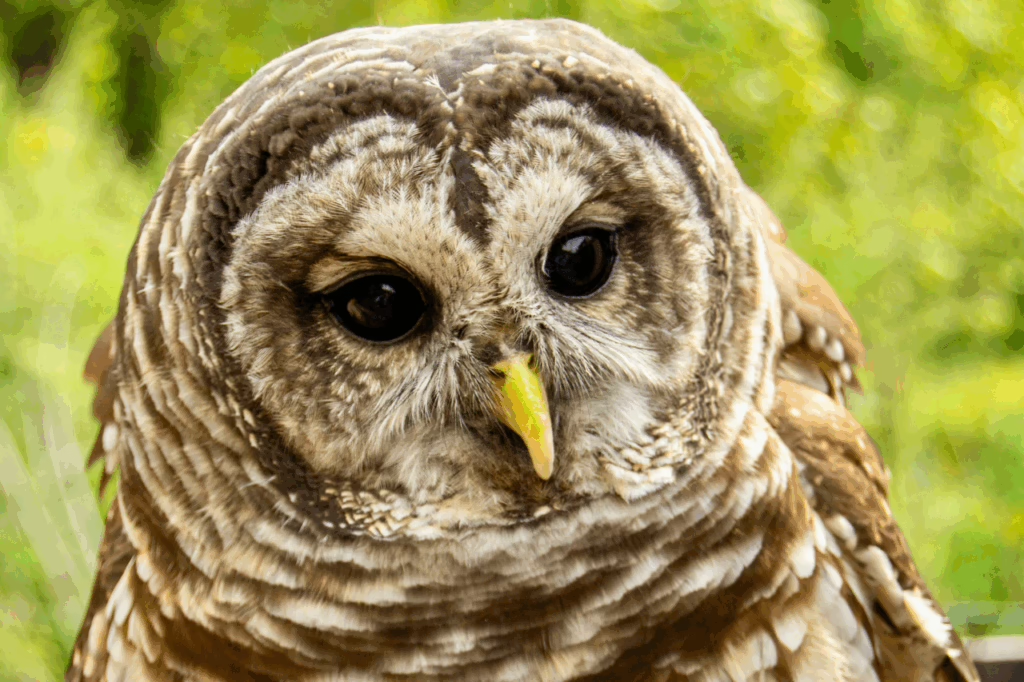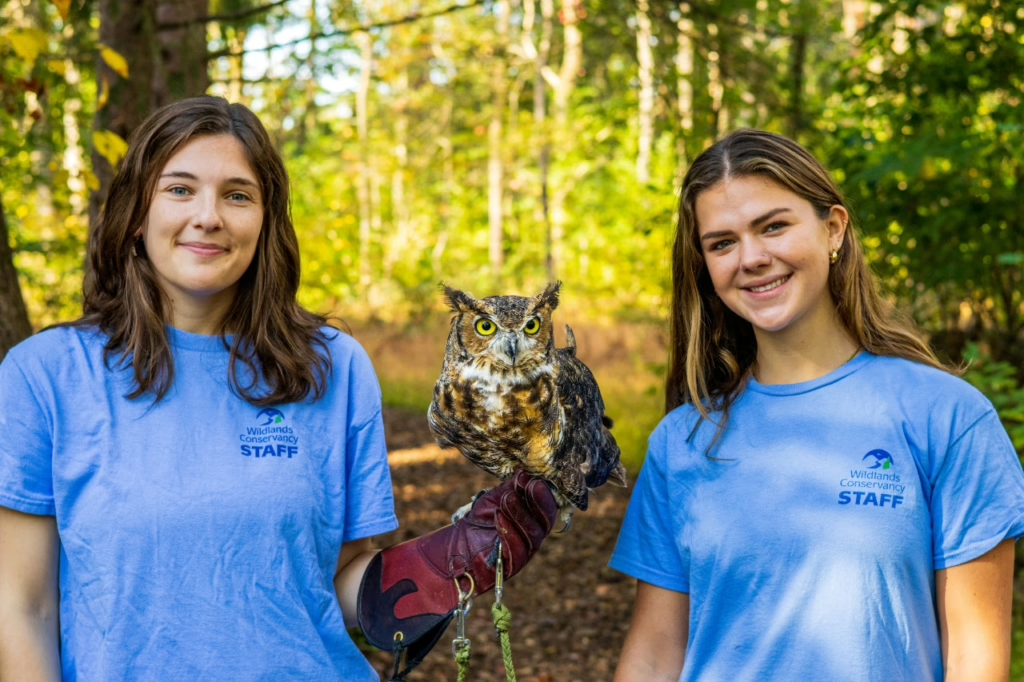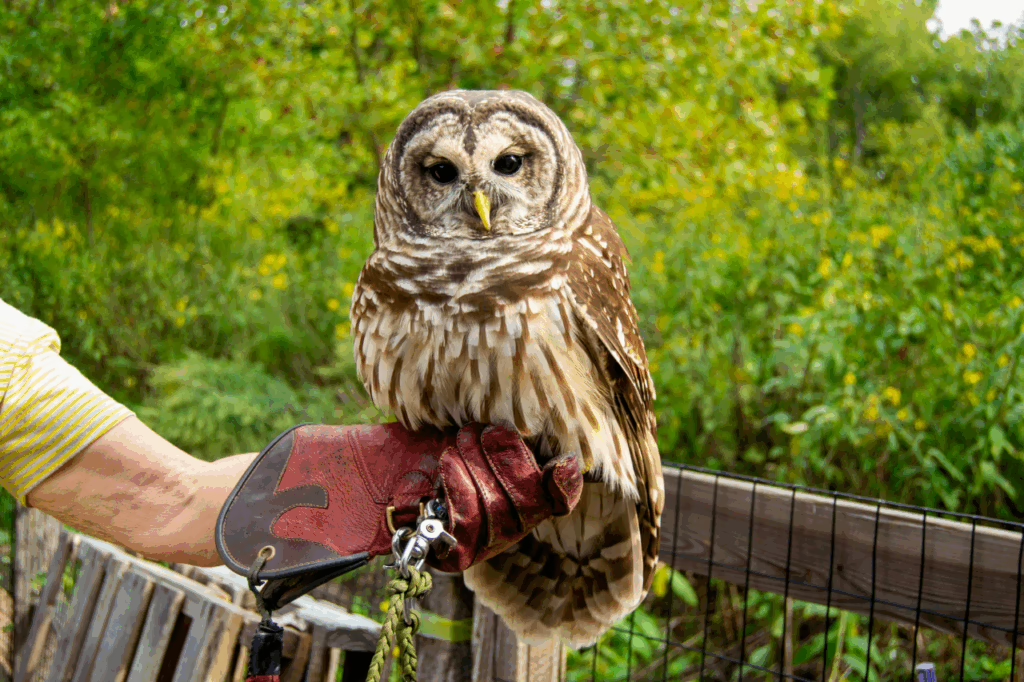15 WILD Owl Facts That Will Give You a HOOT
Pennsylvania’s native owls are more frequently heard than seen. And some species ask the darndest things? Like “WHO cooks for you?” While others will have you thinking there’s a horse…in a tree…in the woods…in the middle of the night.
Locally, their elusive and often nocturnal activity keeps us curious about these stealthy and silent fliers. So, we caught up with animal care intern and Lafayette College senior Ellie Spencer, a biology major and geology minor, to help bring some wise owl insights to light!
Read on for 15 fascinating facts about owls that might give you a hoot!
Photos by: Skip Cook and Ellie Spencer
1: Most owls are nocturnal, but not all.
Barred owls are known to hunt at dawn/dusk. Great horned owls are known to hunt during daylight hours, especially when feeding chicks.
2: Owls don’t technically have eyeballs.
Owls have eye-tubes! The proposed theory behind the evolution from eyeballs to eye-tubes is that owls are nocturnal predators and need to see well at night, so owls adapted to have very large eyes in proportion to a small skull. This caused their eyes to change shape to fit (shaped into tubes). This allows these incredible nighttime hunters to see a mouse more than 50 feet away on a night with no moonlight!
Photos by: Skip Cook
3: Owls can rotate their heads 270 degrees.
This is a whopping 100 degrees more than humans are capable of! This allows them to see (almost) all the way around their heads, which is necessary as their eye tubes are locked in a single direction.
4: They have a vascular reservoir to supply blood to a rotated head.
When owls turn their heads that far, they access a vascular reservoir near their jaw, where they pool their blood to continually supply it to their brain and eyes while looking around!
5: A group of owls is called a parliament.
The name originates from C.S. Lewis’s The Chronicles of Narnia,
Parliament
Noun: a formal conference for the discussion of public affairs
Noun: a group of wise owls
6: Owls have a couple of backward toes.
Owls’ feet have two forward-facing toes and two backward-facing toes, which categorizes them as “zygodactyl.” Unlike most other zygodactyl birds, however, owls can pivot one of their back toes forward to help them grip or walk.
7: Owls hunt at night to take advantage of stealth.
Owls have adapted feathers to fly nearly silently compared to other birds of prey. They’re stealth ambushers in the dark, not fast flying attackers like many raptors.
8: Not all owls hoot!
While owls are iconic for their deep nighttime calls, not all share the same iconic hoot as the great horned owl. Eastern screech-owls whinnies similar to horses, and the saw-whet Owl sounds like a Whetstone sharpening a Saw.
9: The barred owl’s unique call sounds like, “WHO cooks for you?”
The barred owl, the second-largest owl species native to Pennsylvania, has a distinctive hoot (and a rather odd question):
“Who cooks for you? Who cooks for you all?”
10: Pennsylvania has eight species of owl.
The great horned owl, barred owl, and Eastern screech-owl are the most common and likely species to be seen year-round in the state. The others, like the short-eared and snowy owls, are primarily winter visitors, while others, like the barn owl, are considered residents, but are uncommon to rare.
11: ‘Saw-whet’ owls are the smallest owl species in Pennsylvania.
The Northern saw-whet owl is only about 7 to 8 inches long with a wingspan of around 18 inches.
12: Great horned owls are the largest owl species in Pennsylvania.
Great horned owls can grow up to 25 inches long with a wingspan of 55 inches!
Photos by: Skip Cook and Ellie Spencer
13: Owls ears are asymmetric.
The unique, asymmetric structure of their ears is part of what makes them amazing hunters. The left ear is about an inch higher and points downward, while the right ear is lower but points upward, allowing them to better assess the exact location of prospective prey so they can accurately pinpoint their next meal.
14: Eastern screech owls show their emotions all over their face.
The Eastern screech-owl has ear tufts that can be held upright to make the owl seem larger when it feels threatened, or lowered for a rounder appearance when relaxed.
15: Owls are found on almost every continent.
Owls are found on every continent (except Antarctica), and there are around 250 species of owls worldwide. These are classified into two families: Tytonidae (barn owls) and Strigidae (true owls).
Photos by: Ellie Spencer and Skip Cook
Our Staff Are A Bunch of Wild Animals
My name is Ellie Spencer, and I’m a senior at Lafayette College completing my B.S. in Biology with a minor in geology.
I grew up next to Twin Maple Farms in Bath, PA, and have been coming to Wildlands Conservancy since I was little! I’m passionate about ecology, science, and research, with experience ranging from studying foraging behavior in house sparrows to analyzing the effects of food provisioning on wild dolphins in Australia.
Outside of research, I enjoy wildlife photography, playing guitar, traveling, outdoor activities, and finding ways to connect science with real-world conservation.
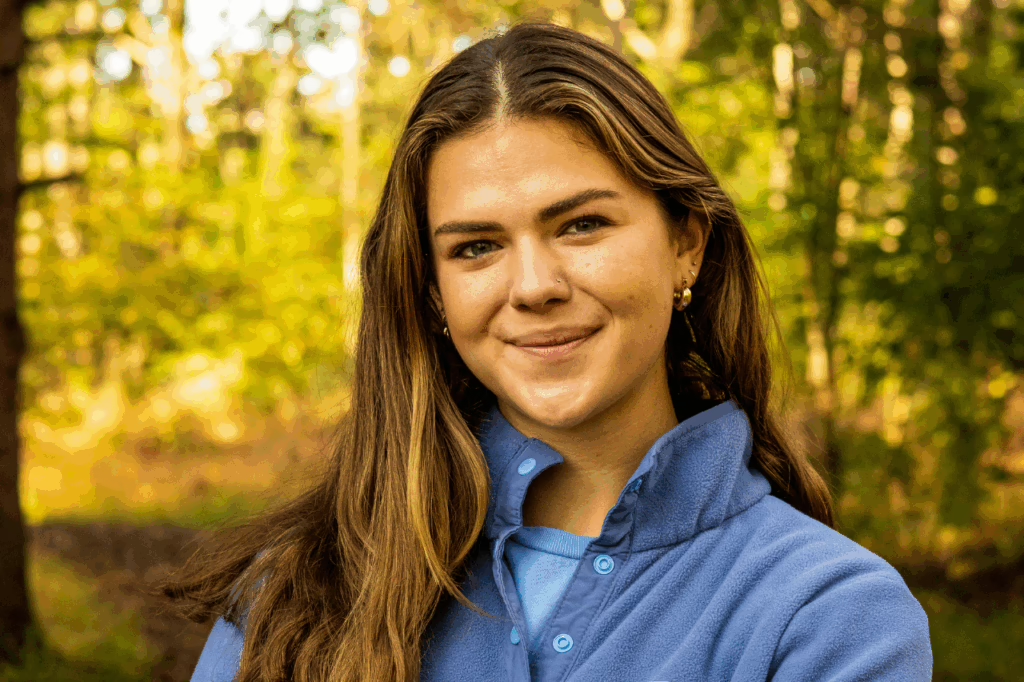
Photo by: Skip Cook
Upcoming Owl-door Adventures
TWO family-friendly, owl-themed outdoor adventures you won’t want to miss.
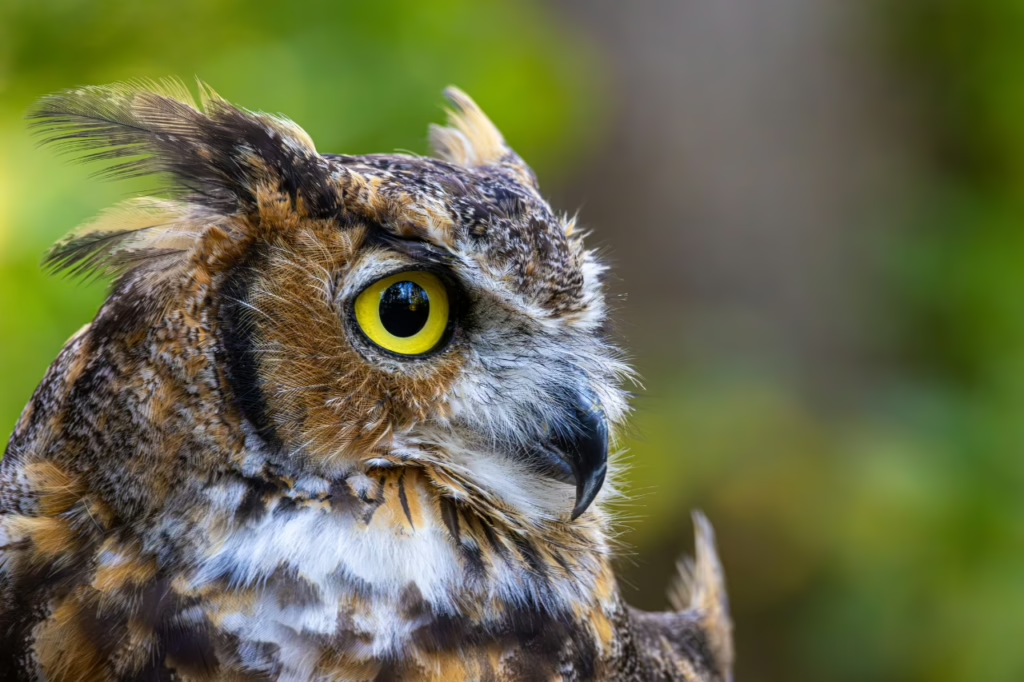
Family Hoot Hike
Fri., Nov. 7, 5 – 7 P.M.
Trexler Nature Preserve
Meet Wildlands Conservancy’s animal ambassador owls and look out for stealthy feathered friends.
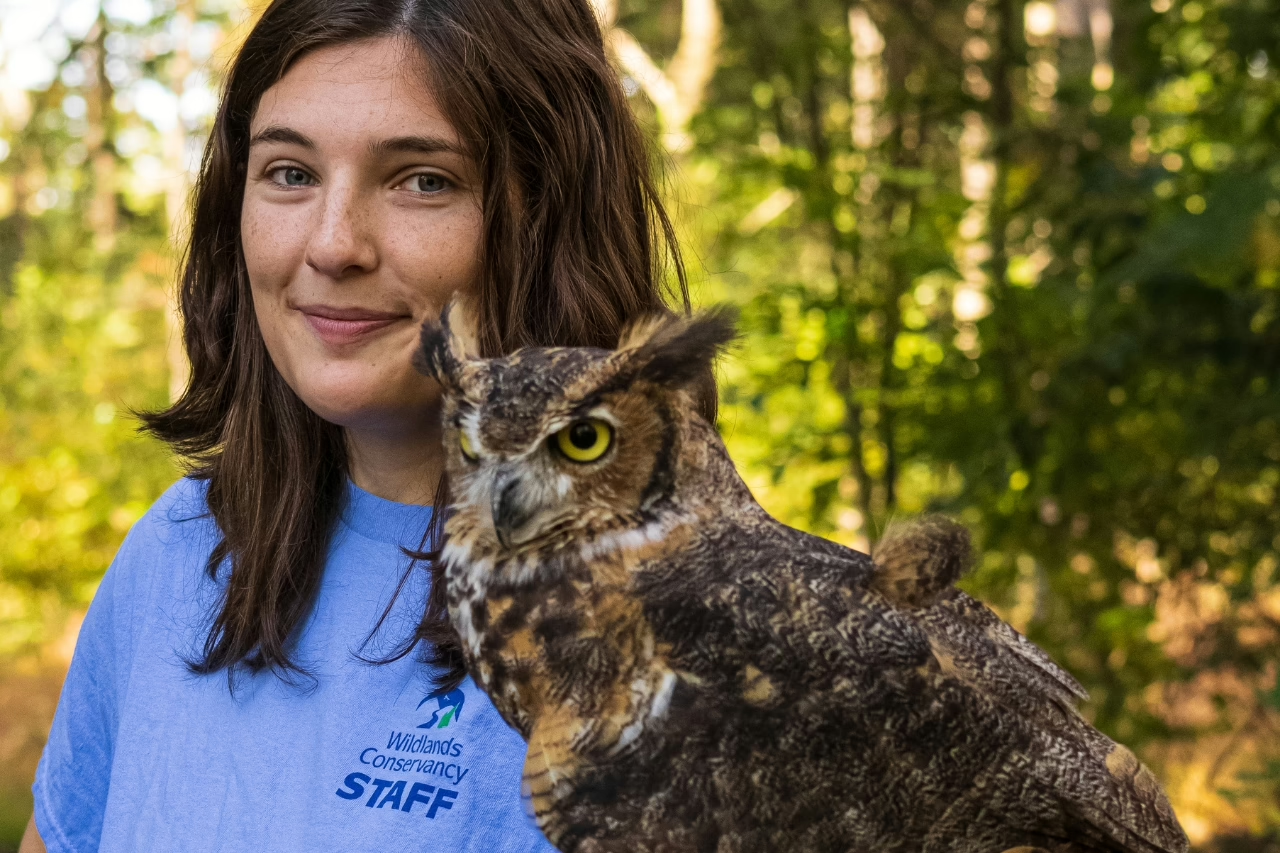
Hoot Hike & Owl Research
Sat., Nov. 8, 6:30 – 8:30 P.M.
Black River Sanctuary
A guided hike in the dark with an ear out for owls, plus insights about owl ecology and conservation.
Stay up to date with what’s happening out here at Wildlands Conservancy! Get stories like this in your inbox by joining our newsletter.
JOIN OUR NEWSLETTER
RELATED POSTS
-
Why Did the Turtle Cross the Road? Dos & Don’ts for Migration SeasonTurtle migration season is upon us! This means you might see these native and wild amphibians in some unexpected places. Knowing how to interact with turtles making their treks is important for them, as well as all the other species living in connection with them, here in the Lehigh River watershed. Here are some helpful […]
-
Native Wildflower Meadow: Educating Young Minds & Regenerating BiodiversitySouth Mountain Preserve is literally seeding new ideas and educating a tomorrow for our special part of the planet. Wildlands’ preserve managers are underway with establishing a 3.3-acre native wildflower meadow in the northwest area of South Mountain Preserve, near the Wilderness Trail. Not only will the wildflower meadow provide sustenance to native pollinators and a home for wildlife, but […]
